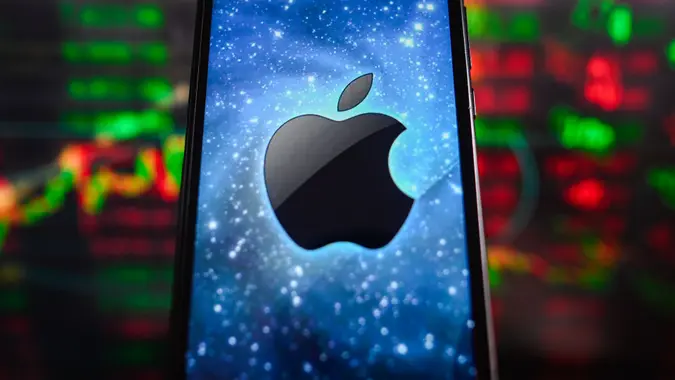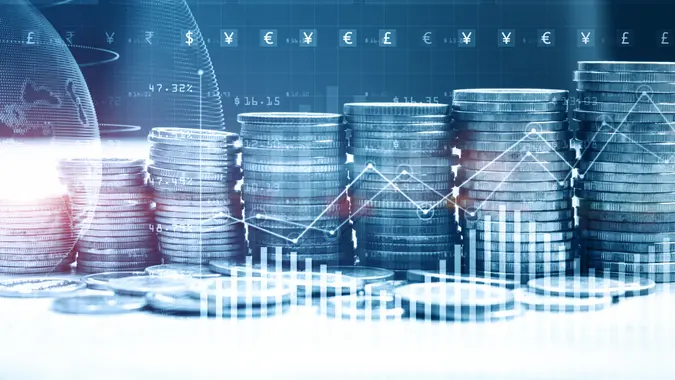The Wall Street ‘Fear Gauge’ Is Going Up — Here’s What That Means for You

Commitment to Our Readers
GOBankingRates' editorial team is committed to bringing you unbiased reviews and information. We use data-driven methodologies to evaluate financial products and services - our reviews and ratings are not influenced by advertisers. You can read more about our editorial guidelines and our products and services review methodology.

20 Years
Helping You Live Richer

Reviewed
by Experts

Trusted by
Millions of Readers
If Congress cannot agree to raise the U.S. debt ceiling, the nation could default as soon as June 1. In a letter to Congress, Treasury Secretary Janet Yellen said that without a debt limit increase by early June, the U.S. will be unable to meet all its payment obligations. It would be the first time in history the U.S. defaulted on its debt, although there have been some close calls.
JPMorgan CEO Jamie Dimon called a default “potentially catastrophic,” CNN reported. “Markets will get volatile, maybe the stock market will go down, the Treasury markets will have their own problems,” Dimon told the news outlet.
Wall Street uses a “fear gauge,” the CBOE Volatility Index, or VIX, to measure market volatility. In 2011, when the government was at a similar standdown of whether or not to raise the debt ceiling, the VIX jumped 35% in one day, hitting a high of 42.7. Experts say a VIX greater than 30 indicates high fear on Wall Street. The VIX typically shows an inverse correlation to the S&P 500. When the S&P 500 rises, the VIX drops.
But that’s not the case at the moment.
Right now, the VIX is taking investors on a roller coaster ride, edging up 2% at the beginning of the week, while the S&P 500 also rose. This movement “may indicate the market is getting ready to make a big move in one direction, but traders are unsure of whether the direction will be bullish or bearish,” Benzinga.com reported.
Midday on May 17, the VIX had dropped by nearly 5%, while the S&P 500 rose by 0.53%. In general, for the year, the VIX is down more than 25%. But it has risen 8.5% in the past month, as the date the U.S. will default on its debt approaches.
Retail investors would be wise to hold tight and weather the storm. As Warren Buffett famously said, “Our favorite holding period is forever.” Likewise, if you plan to hold your investments, it could be a good time to increase your position.
Brad Bernstein, managing director at UBS Wealth Management, told CNN, “We view any near-term pullbacks as buying opportunities.”
 Written by
Written by  Edited by
Edited by 
























